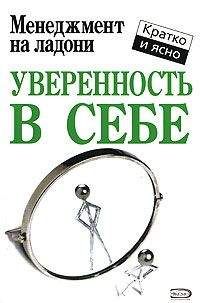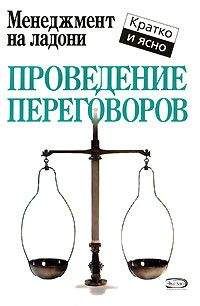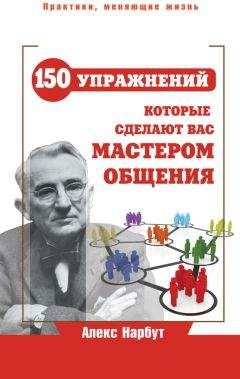Роберт Саттон - Охота за идеями. Как оторваться от конкурентов, нарушая все правила
235
Там же.
236
Wherry, R. “Dumb and Dumber,” Forbes, January 10, 2000, www.forbes.com/forbes/00/0110/6501056a.htm.
237
Wherry, R. “Dumb and Dumber,” Forbes, January 10, 2000, www.forbes.com/forbes/00/0110/6501056a.htm.
238
Stern, J., and M. Stern. Pet Rocks: Encyclopedia of POP Culture (New York: HarperPerennial, 1992). См. также web-страничку Pet Rock на www.virtualpet.com/vp/farm/petrock/petrock.htm.
239
Langer, E. J. “Minding Matters: The Consequences of Mindlessness-Mindfulness,” in Advances in Experimental Social Psychology, ed. L. Berkowitz (New York: Academic Press, 1989), 137–73.
240
Там же, с. 139.
241
Zajonc, R. A. “Emotions,” in Handbook of Social Psychology, ed. D. T. Gilbert, S. T. Fiske, and G. Lindsey (New York: Oxford University Press, 1998), 591–634.
242
Schweiger, D. M., W. R. Sandberg, and P. L. Rechner. “Experiential Effects of Dialectical Inquiry, Devil’s Advocacy, and Consensus Approaches to Strategic Decision Making,” Academy of Management Journal 32 (1989): 745–72.
243
Janis, I. L. Crucial Decisions: Leadership in Policymaking and Crisis Management (New York: Free Press, 1989), 279.
244
Freiberg, K. and J. Freiberg. Nuts: Southwest Airlines’ Crazy Recipe for Business and Personal Success (New York: Doubleday, 1998).
245
Anton, T. Bold Science (New York: Freeman, 2000)
246
Там же, с. 62.
247
McGhee, P. E., and J. H. Goldstein. Handbook of Humor Research: Basic Issues, vol. 1 (New York: Springer-Verlag, 1991); and McGhee, P. E., and J. H. Goldstein, Handbook of Humor Research: Applied Studies, vol. 2 (New York: Springer-Verlag, 1991).
248
MacKenzie, G. Orbiting the Giant Hairball: A Corporate Fool’s Guide to Surviving With Grace (New York: Viking, 1996).
249
MacKenzie, G. Orbiting the Giant Hairball: A Corporate Fool’s Guide to Surviving With Grace (New York: Viking, 1996), 122.
250
Sitkin, S. K. M. Sutcliffe and D. G. Schroeder. Distinguishing Control from Learning in Total Quality Management: A Learning Perspective,” Academy of Management Review 19 (1993): 537–64.
251
Из речи Уильяма Э. Койна в корпоративном университете Motorola в г. Шаумбург, штат Иллинойс, 11 июля 2000 г.
252
Asakura, R. Revolutionaries at Sony (New York: McGraw-Hill, 2000), 42.
253
Zajonc, R. “Social Facilitation,” Science 149 (July 1965): 269–74.
254
Mullen, B., C. Johnson, and E. Salas. “Productivity Loss in Brainstorming Groups: A Meta-analytic Integration,” Basic and Applied Psychology 12 (1991): 2–23. См., например, McLaughlin, J. B., and D. Reisman. “The Shady Side of Sunshine,” Teachers College Record 87 (1986): 472–94; Sutton, R. I., and D. C. Galunic. “Consequences of Public Scrutiny for Leaders and Their Organizations,” in Research in Organizational Behavior, vol. 18, ed. (Greenwich, CT: JAI Press, 1996): 201–50.
255
Kidder, T. The Soul of a New Machine (New York: Avon Books, 1981).
256
Nonaka, I. “Toward Middle-Up-Down Management: Accelerating Information Creation,” Sloan Management Review (spring 1988): 9–18.
257
Kawasaki, G. The Macintosh Way (New York: Harper Collins, 1989), 16.
258
Rhodes, R. The Making of the Atomic Bomb (New York: Simon & Schuster. 1987; and Gleick, J., Genius: The Life and Science of Richard Feynman (New York: Pantheon, 1992), 160.
259
Hill, R. C. “When the Going Gets Tough: A Baldrige Award Winner on the Line,” Academy of Management Executive 7 (1993): 75–79.
260
Hill, R. C., “When the Going Gets Tough: A Baldrige Award Winner on the Line,” Academy of Management Executive 7 (1993): 79.
261
McCracken, G. Plenitude: Culture by Commotion (Toronto: Periph.Fluide, 1997).
262
McCracken, G. Plenitude: Culture by Commotion (Toronto: Periph.Fluide, 1997): 69.
263
Wetlaufer, S. Common Sense and Conflict: An Interview with Disney’s Michael Eisner. Harvard Business Review (January-February 2000): 119.
264
Metcalfe, B., “Invention Is a Flower, Innovation Is a Weed,” MIT Technology Review (November/December 1999): 54–57.
265
Там же, с. 57.
266
Balu, R. Listen (No, Listen Carefully). Fast Company (May 2000): 307.
267
@Issue Magazine, vol. 6, no. 2. Fall, 2000: 16–23.
268
Druckerman, P. “How to Project Power Around the World,” Wall Street Journal, November 13, 2000, A23, A26.
269
Amabile, T. M. “Unleashing Creativity,” presentation at the Strategos Institute Revolutionaries’ Conference, San Jose, California, June 13, 2000.
270
Amablie, T. M. “How to Kill Creativity,” Harvard Business Review (September-October 1998): 77–87.
271
Thuraisingham C., and C. O’Reilly, Homestead.com, teaching case, Palo Alto, CA: Graduate School of Business, Stanford University, 2000.
272
Из речи Тома Кугла перед участниками учебно-практического семинара Mayfield Fellows в Стэнфордском университете 30 июля 2000 г., Вудсайд, штат Калифорния.
273
Herrigel, E. Zen in the Art of Archery (New York: Random House, 1981).
274
Schrage, M. “What’s That Bad Odor at the Innovation Skunk Works?” Fortune, December 6, 1999.
275
Mintzberg, H. “The Manager’s Job: Folklore and Fact,” Harvard Business Review (1990) July – August: 49–61.
276
Gleick. Genius, 382.
277
Lazarus, R. S. “The Costs and Benefits of Denial,” in Stress and Coping: An Anthology, ed. A. Monat and R. S. Lazarus. (New York: Columbia University Press, 1985), 154–73.
278
Из личной беседы Герберта Саймона с Марком Фишманом 12 декабря 2000 г. Эта же мысль высказана в книге Г. Саймона: Simon, H. “Information Can Be Managed,” Think 33 (3), (1967): 8–12.
279
Kidder, T. The Soul of a New Machine, 60.
280
Schrage, M. Serious Play (Boston: Harvard Business School Press, 1999), 88.
281
Hertsgaard, M. On Bended Knee: The Press and the Reagan Presidency (New York: Schocken Books, 1989).
282
Galunic, C. D. “The Evolution of Intracorporate Domains: Divisional Charter Losses in High Technology, Multidivisional Corporations,” (Ph.D. diss. Palo Alto, CA: Stanford University, School of Engineering, 1994).
283
Eisenberg, E. M. “Ambiguity as a Strategy in Organizational Communication,” Communication Monographs 51 (1984): 227–42.
284
Reid, R. Architects of the Web: 1,000 Days that Built the Future of Business (New York: Wiley, 1997), 125.
285
Polanyi, M. “The Potential of Adsorption: Authority in Science has Its Uses and Its Dangers,” Science 141 (1963): 1012.
286
Watson, J. L. “China’s Big Mac Attack,” Foreign Affairs, May-June 2000.
287
Tilin, A. “Supreme O,” Wired, December 19, 1999, 178.
288
Gleick, J. Genius: The Life and Science of Richard Feynman (New York: Pantheon, 1992), 324.
289
Gleick, J. Genius: The Life and Science of Richard Feynman (New York: Pantheon, 1992), 387.
290
Goodall J. In the Shadow of Man (New York: Houghton Mifflin, 1988), 6.
291
Dyson J. Against the Odds (London: Orion Business Books, 1997), 264–65.
292
AsakuraR. Revolutionaries at Sony (New York: McGraw-Hill, 2000), 229.
293
Gundling E. The 3M Way to Innovation: Balancing People and Profit (New York: Kodansha, 2000).
294
Koppell T. Powering the Future (New York: Wiley, 1999), 15.
295
Salter C. Life in the Fast Lane // Fast Company (October 1998): 78.
296
Millard A. Edison and the Business of Innovation (Baltimore: Johns Hopkins University Press, 1990), 9.
297
Anton T. Bold Science (New York: Freeman, 2000), 12.
298
Grove A. Only the Paranoid Survive (New York: Doubleday, 1996), 89.




